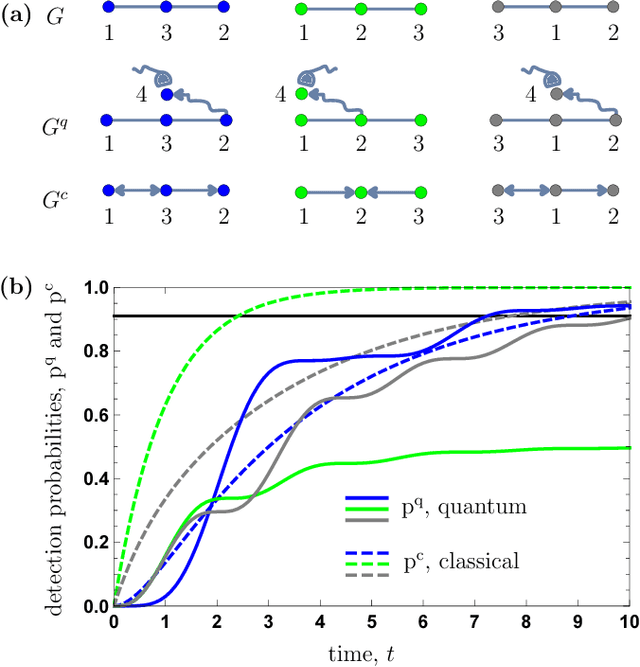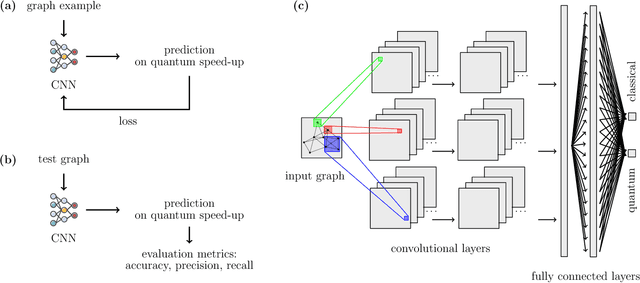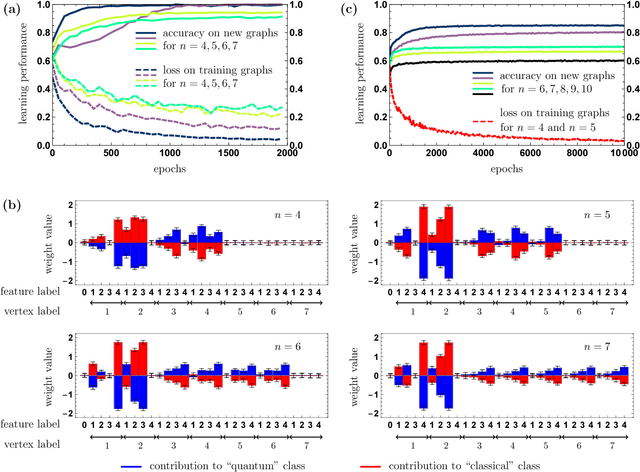Detecting quantum speedup by quantum walk with convolutional neural networks
Paper and Code
Jan 30, 2019



Quantum walks are at the heart of modern quantum technologies. They allow to deal with quantum transport phenomena and are an advanced tool for constructing novel quantum algorithms. Quantum walks on graphs are fundamentally different from classical random walks analogs, in particular, they walk faster than classical ones on certain graphs, enabling in these cases quantum algorithmic applications and quantum-enhanced energy transfer. However, little is known about the possible speedups on arbitrary graphs not having explicit symmetries. For these graphs one would need to perform simulations of classical and quantum walk dynamics to check if the speedup occurs, which could take a long computational time. Here we present a new approach for the solution of the quantum speedup problem, which is based on a machine learning algorithm that detects the quantum advantage by just looking at a graph. The convolutional neural network, which we designed specifically to learn from graphs, observes simulated examples and learns complex features of graphs that lead to a quantum speedup, allowing to identify graphs that exhibit quantum speedup without performing any quantum walk or random walk simulations. Our findings pave the way to an automated elaboration of novel large-scale quantum circuits utilizing quantum walk based algorithms, and to simulating high-efficiency energy transfer in biophotonics and material science.
 Add to Chrome
Add to Chrome Add to Firefox
Add to Firefox Add to Edge
Add to Edge